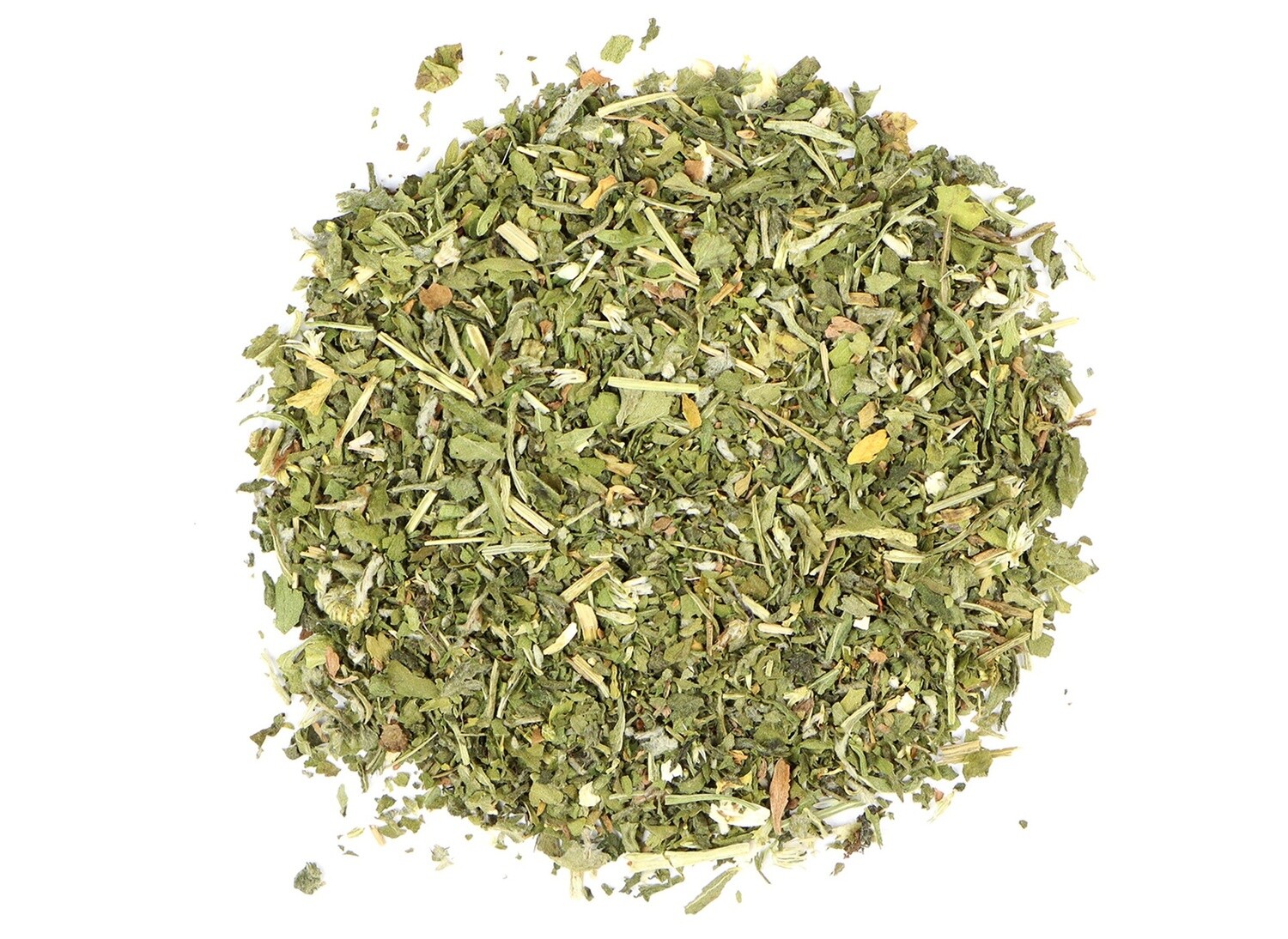Feverfew Organic / per oz
Gender: Masculine
Planet: Venus
Element: Water
Powers: Protection
Magical Uses and History: Feverfew is aptly named for one of its many uses, treating fever, but has historically been used to treat a variety of ailments including inflammation, menstrual cramps, toothaches, arthritis, vertigo, spasms, labor pains, insect bites, and the plague. The Ancient Greeks referred to feverfew as Parthenium supposedly because it was used to save the life of someone who had fallen from the Parthenon during its construction in the 5th century BC. As such, it is believed that carrying feverfew, along with hyssop and rosemary, will protect the wearer from accidents. Parthenium, however, also means "girl" which may allude to its traditional use for treating female complaints. By the 18 century, it became known as "medieval aspirin" for its use in treating headaches.
In the late Anglo-Saxon period until the 20th century, feverfew was used to treat elfshot or flying venom, a medical condition described in Wið færstice (an Anglo-Saxon medical text), that was caused by invisible elves shooting invisible arrows at a person or animal thus causing shooting pain in a localized area of the body. Its likely this pain was arthritis, a stitch, or muscle cramp. According to Wið færstice, feverfew along with red nettle and waybread could be combined to create an elfshot charm to cure the ailment. First, feverfew, red nettle, and waybread were boiled in butter while saying,
"Loud they were, lo, loud when they rode over the mound.
They were fierce when they rode over the land.
Shield yourself now that you may escape this evil.
Out, little spear, if herein you be!
Stood under linden, under a light shield where the mighty women readied their power and their screaming spears sent.
I back to them again wills end another,
a flying dart against them in return.
Out, little spear, if herein it be!
Sat a smith, forged he a knife, little iron-strong wound.
Out, little spear, if herein it be!
Six smiths sat; war-spears they made.
Out, spear, not in, spear!
It herein be a bit of iron, hag's work, it shall melt.
If you were in the skin shot, or were in flesh shot,
or were in the blood shot, or were in bone shot,
or were in limb shot, may your life never be torn apart.
If it were Aesir shot, or if it were elves' shot,
or it were hag's shot, now I will help you.
This your remedy for Aesir shot; this your remedy for elves' shot;
This your remedy for hag's shot; I will help you.
It fled there into the mountains...no rest had it.
Whole be you now! Lord help you!
Then take the knife; dip into liquid."
Then a knife was dipped into the liquid and the mixture was likely rubbed on the afflicted area. All three of these herbs have spearhead-shaped leaves, likely a form of sympathetic magic. Either way, feverfew earned a reputation for being medicinally and magically valuable as a restorative and protective plant.
In medieval Europe, it was commonly planted in cottage gardens to protect the inhabitants. When the plague hit, people made sure to plant feverfew around the perimeter of their house to prevent the plague from entering. It is possible feverfew prevented plague-ridden vermin from entering the property which in turn kept the occupants safe. Today, feverfew is commonly used in protection magics and placed in protection sachets or planted around the home for the same purpose. It can also be used in baths or as a tea to break hexes and curses.
Feverfew can be used in a number of spells including:
Protection Spells
Breaking Hexes
Medicinal Uses: Feverfew is primarily used to treat headaches and migraines and is commonly taken at the first sign of pain. However, it may also help relieve arthritis when caused by inflammation, menstrual cramps, painful periods, and even dizziness and tinnitus. However, feverfew should not be used if you are pregnant as it can stimulate the womb. The leaves may also cause ulcers in sensitive people. Furthermore, it has blood-thinning qualities and should not be used by anyone currently on blood-thinners or undergoing surgery in the near future.
Preparation and Dosage: Feverfew can be taken internally one of three ways: chewing the leaves, infusion, or tincture (pill form is also available). It should be noted the leaves taste awful and can cause mouth ulcers so it is suggested the leaves are taken with food to reduce the effects. The most common way refers to the elfshot charm above: eat 3-5 fresh leaves on buttered bread daily to reduce headaches and migraines and prevent sores. To create an infusion, combine 3 tbsp fresh feverfew flowers and leaves or 3 tsp dried feverfew with one cup boiling water. Allow to steep for 20 minutes. Add honey to taste and drink 1/4 cup every 30 minutes until symptoms subside. It can be combined with lemon balm, skullcap, and chamomile for an even more powerful headache infusion. If taking a tincture, take 1-2 milliliters of tincture up to three times a day at the onset of symptoms. Externally, feverfew can be made into a salve and used to treat arthritis pain topically.Common Names
Bachelor's button, featherfew, Santa Maria, wild chamomile
Botanical Name:Tanacetum partheniumOrigin:United States
